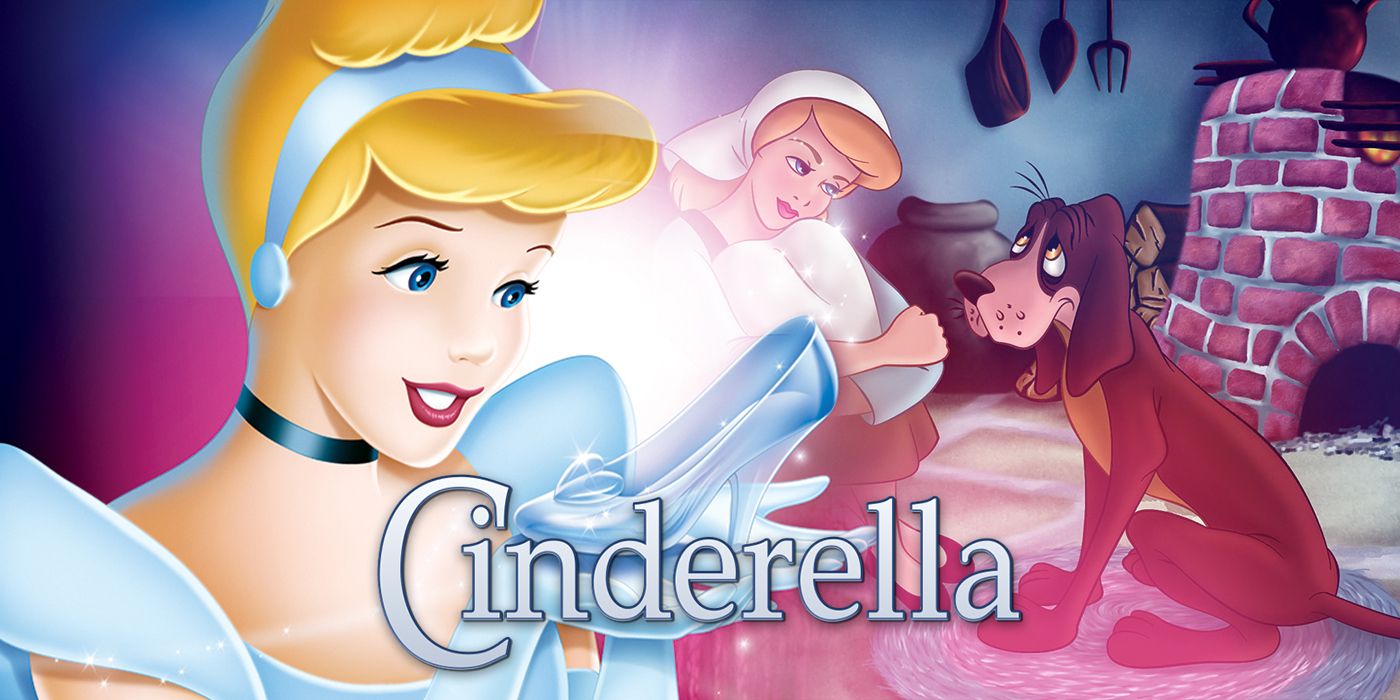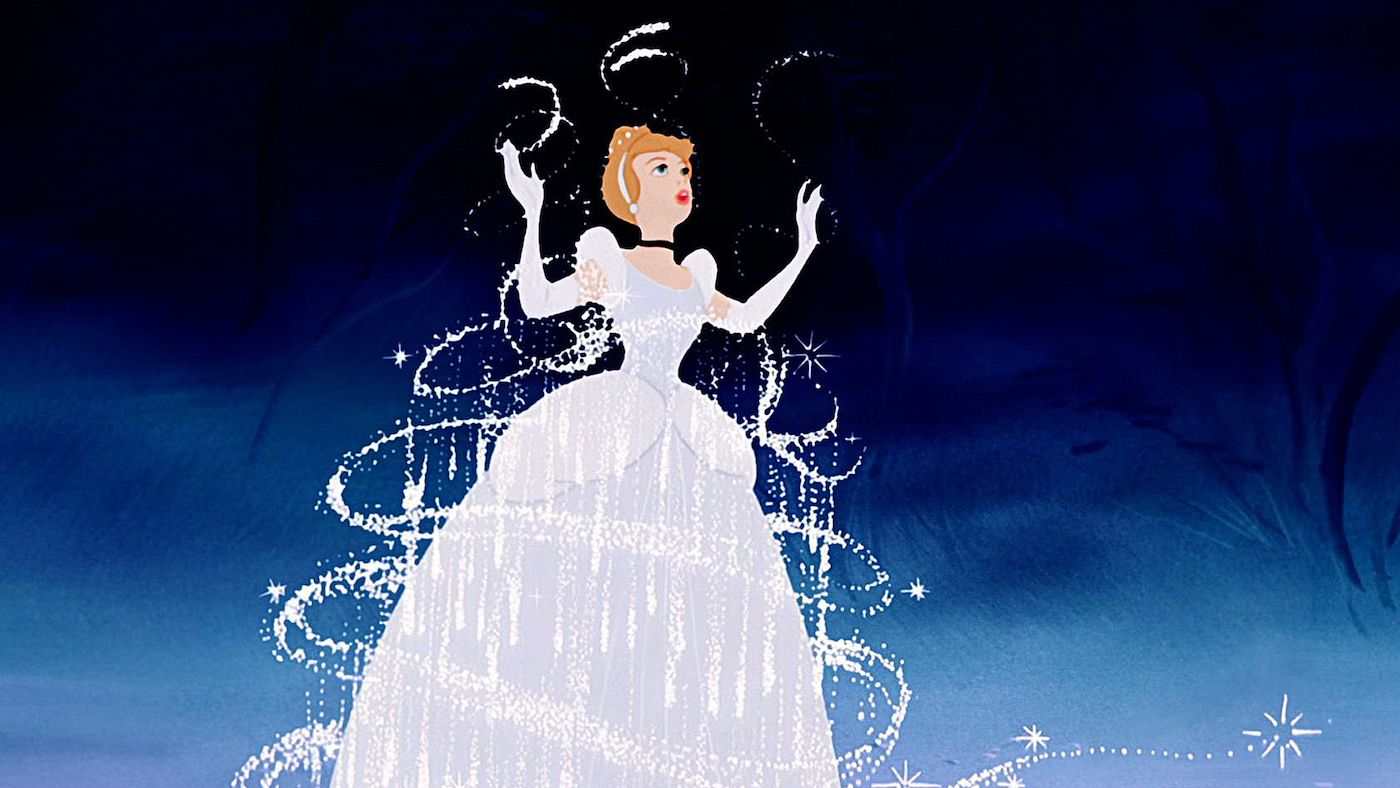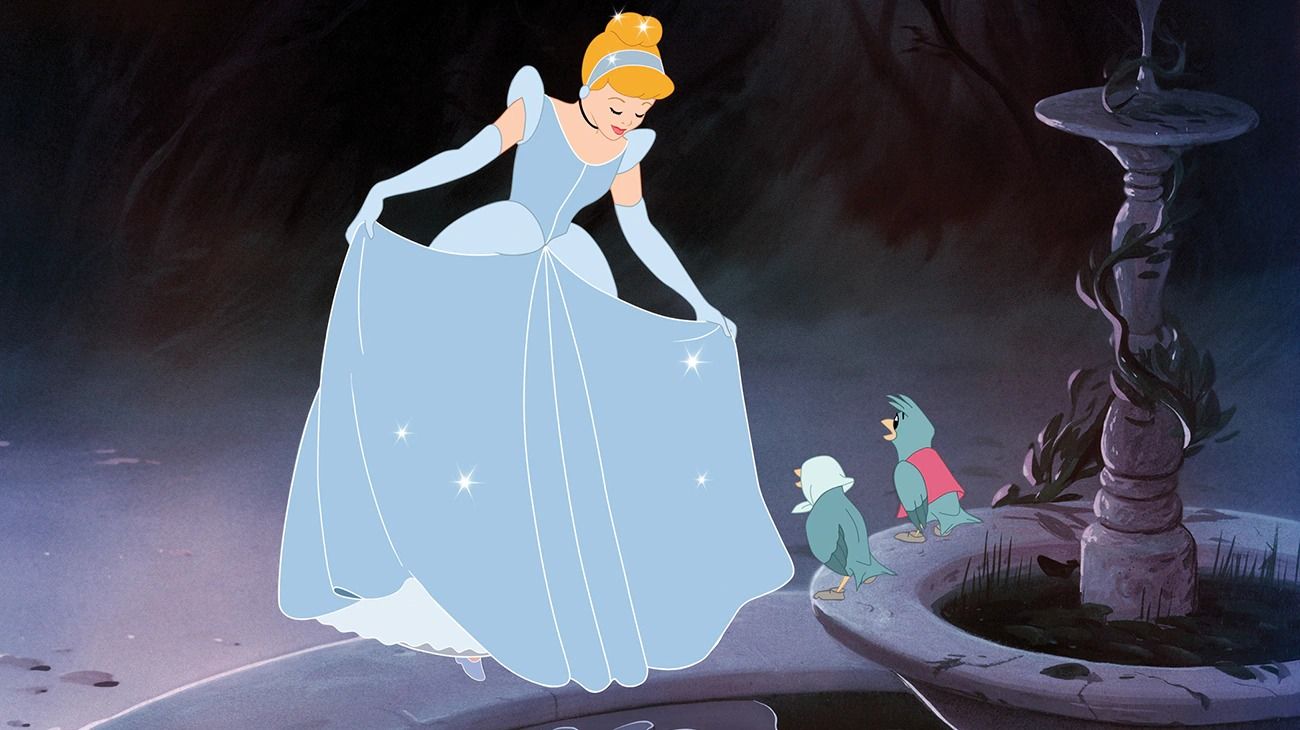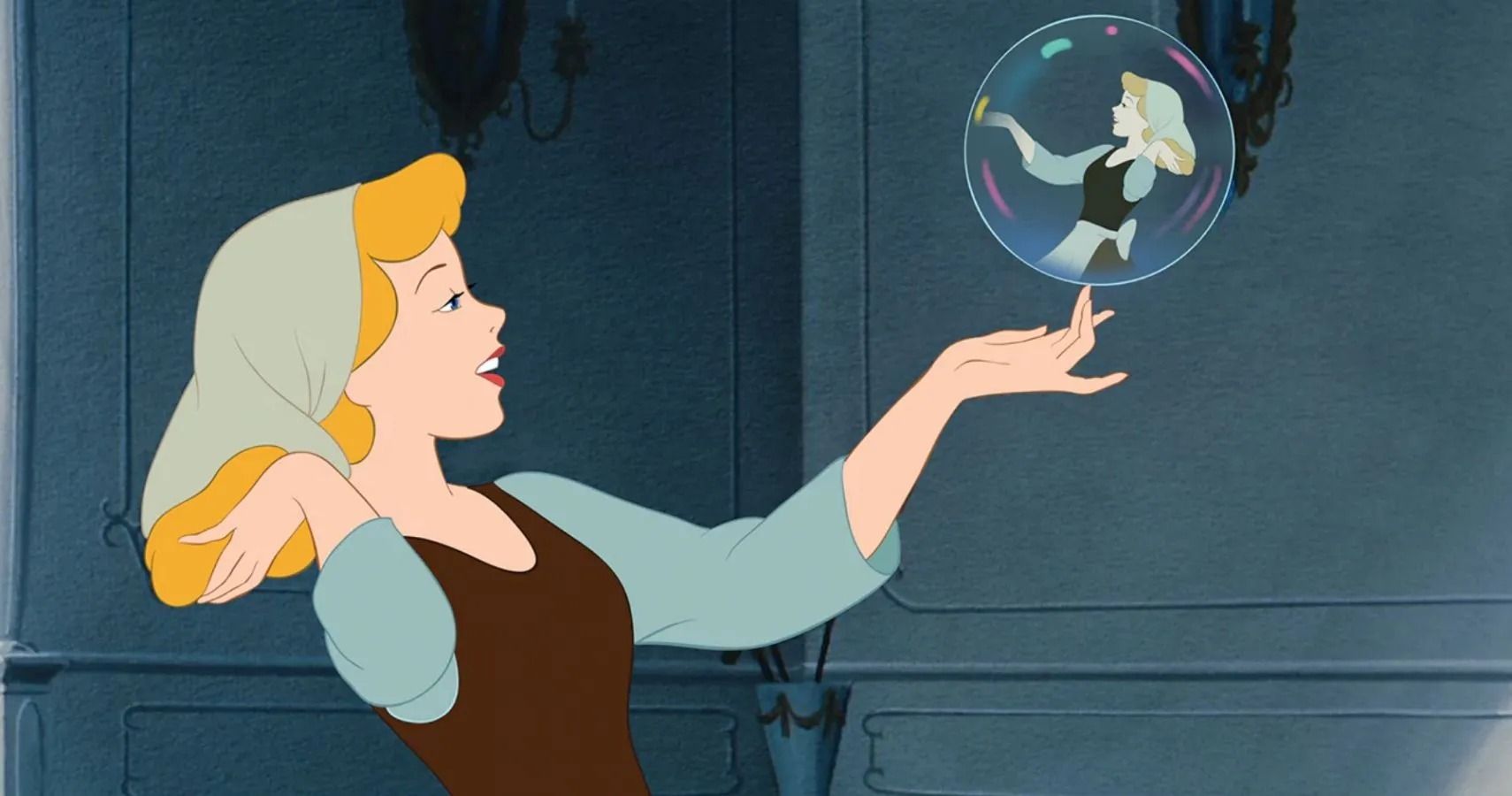Quick - picture a generic Disney princess. No one specific, just that archetype. I’ll wager you thought of woodland critters, bucolic cottages, and a high soprano with an unflappably cheery disposition speaking in verse or singing as she waits for her prince to come. That picture is straight out of Snow White and the Seven Dwarfs, such is the outsized influence of that film on the popular imagination to this day. Yet when it comes to critiquing and revising that image, the target is more often than not Disney’s Cinderella instead.
Critics and academics have had their say, naturally, but there’s an ongoing response within cinema to that 1950 film. Numbers will vary depending on what you count as a true adaptation, but there are quite a few more Cinderella movies than Snow White ones, and many push against elements popularized, if not introduced, by Disney: the pumpkin carriage, the glass slipper, that particular number and appearance for the stepsisters, and so on. More than that, many of these films make changes to Cinderella herself, whether by lessening or removing her romantic interests, injecting social or political conflicts for her to resolve, or just by nudging her personality to one extreme or another. Anything, it seems, to avoid the charge one critic levied at Disney’s version of the princess: “Cinderella doesn’t really do anything.” But how deserved is that critique?
Cinderella Is the Most Proactive of Walt Disney’s Princesses
In his book The Disney Films, Leonard Maltin wrote that the fairy tale films of Walt Disney’s era seemed worried that the strait-laced princesses and princes couldn’t sustain interest on their own, hence the generous portions of screen time devoted to their supporting cast. This was meant as an observation, not a criticism; even the most fascinating of heroes and heroines benefit from having other characters to bounce off and provide complements and contrasts. For Snow White, she already shared title billing with seven of her co-stars and was written as a childlike naïf, the sort of character who easily inspires affection but needs caring from her dwarven friends. Princess Aurora of Sleeping Beauty may be older, but the very nature of that story means that the sleeping beauty is the stakes, not the protagonist – hence the three good fairies.
The opening of Cinderella suggests similar adaptation choices. Most of the first act is spent following the animals who live in Cinderella’s château, chiefly the mice Jaq and Gus and the nasty cat Lucifer. But from the beginning, Cinderella herself has more of a presence in her film than Snow White or Aurora. Before Jaq and Gus get to their business, the film takes time to establish Cinderella’s personality and responsibilities. She’s under no illusions about her situation, forced to maintain the entire household single-handedly under a constant barrage of abuse from her stepfamily. This is someone making the most of a bad situation. But her spirit is unbroken. While she generally takes the cruelty thrown her way without complaint, she isn’t meek and submissive. Her head is always held high. Cinderella isn’t without her limits either; she asserts her rights as a member of the family, protests against false charges of pranks, and loses her temper at Lucifer, who she can dominate when she needs to. She even has flashes of a sardonic sense of humor about her stepsisters that she shares with her animal friends.
Her Actions and Attitude Have a Pay-off
Cinderella’s relationship with animals is another distinguishing feature for her. The woodland animals Snow White encounters seem to love her for her innocence and sweetness, as everyone but the Evil Queen does. The animals in Sleeping Beauty love Aurora, presumably, because she grew up with them while disguised as Briar Rose for sixteen years, as well as being kind and charming. Cinderella is easy to like too, but she doesn’t just sing to the animals and have them help her with her chores. She protects them from Lucifer, feeds them, clothes them, and gives them a better life, even as her dreams for a better life remain just dreams. And since the mice, at least, are more anthropomorphized than other animal sidekicks from Walt’s era, they have a firm conception of her plight and repay her kindness by finishing her dress for the ball – a ball she wants to attend for fun and because it’s her right to go, not to bag her a man.
That dress is ruined by the stepsisters, of course, in a harrowing sequence that begs for the arrival of the fairy godmother to lift Cinderella’s spirits. But magic intervention for good (or ill) isn’t a constant in Cinderella the way it is in Snow White and Sleeping Beauty. The fairy godmother only appears after all of Cinderella’s own efforts to maintain dignity, goodwill, and faith for something better collapse, and only after her good deeds that return to her fail to give her a chance. That she did those good deeds at all, and kept faith for so long, is what lets the fairy godmother appear to her. But it’s also made clear that magic offers only a temporary respite. At the stroke of midnight, the waking dream of a nightlong dance with someone special (someone Cinderella does not know is a prince) is broken, and Cinderella is left on her own again – with that famous glass slipper as a memento.
All of these things come together in the climax when the Grand Duke appears for fittings of the other glass slipper. Here, Cinderella does share something with the other princesses of Walt’s time; she’s made a damsel in distress, imprisoned in her room by Lady Tremaine. But Cinderella remains awake for the whole ordeal, and is thus able to have some agency in her rescue. The animals she has cared for, fed, and clothed unite to fetch her the key, and when Lucifer interferes, they turn the household knickknacks Cinderella has given them on him. If Cinderella can’t get out of her room to help them, she can see the action through the keyhole and direct her friends how to vanquish the cat. Once they get her the key, she gets herself out of the room and takes great joy in revealing that she has the other slipper. It isn’t a completely independent act, but it grants Cinderella one clear show of defiance against her step-family and pays off her actions and outlooks throughout the film in a way that didn’t happen for Snow White or Aurora. I might add that it’s also more than she’s allowed to do for her own well-being in the 2015 remake with Lily James, where she is utterly resigned to her fate and is only rescued through the quick thinking of the hitherto animalistic mice.
The Perception of ‘Cinderella’ Doesn’t Match the Film Itself
The point of these comparisons isn’t to impugn Snow White or Sleeping Beauty, two movies I think also attract unwarranted criticism. They have their reasons for keeping their princess characters in supporting roles with less agency. Frankly, Snow White is a better movie overall than Cinderella, and Sleeping Beauty is a much better one. I would never deny, either, the general limitations on women’s roles in film in the 1950s or the advancements made since.
But one shouldn’t let generalities disguise worthy exceptions. So many of the negative responses to Disney’s Cinderella and other princess movies amount to arguments with a perception or a memory, not with the movies themselves. As we have seen, of all the Disney princesses created during Walt's lifetime, Cinderella says and does the most –for others’ sake–and her own. But even positive generalities about Disney princess characters, like their degree of agency, can reduce them to a model sheet, a certain colored dress for marketing purposes, and those simple Snow White characteristics with Cinderella’s trappings.
There’s more to all of these movies than that. They wouldn’t last long enough to inspire generalities and stereotypes otherwise. For Cinderella, that means offering up a dimensional and quietly heroic female character. Far from not doing anything, she is the first of Disney’s princesses who can truly be called the protagonist in her own story, and I think is overdue for a little less reaction and a little more appreciation for that virtue.




